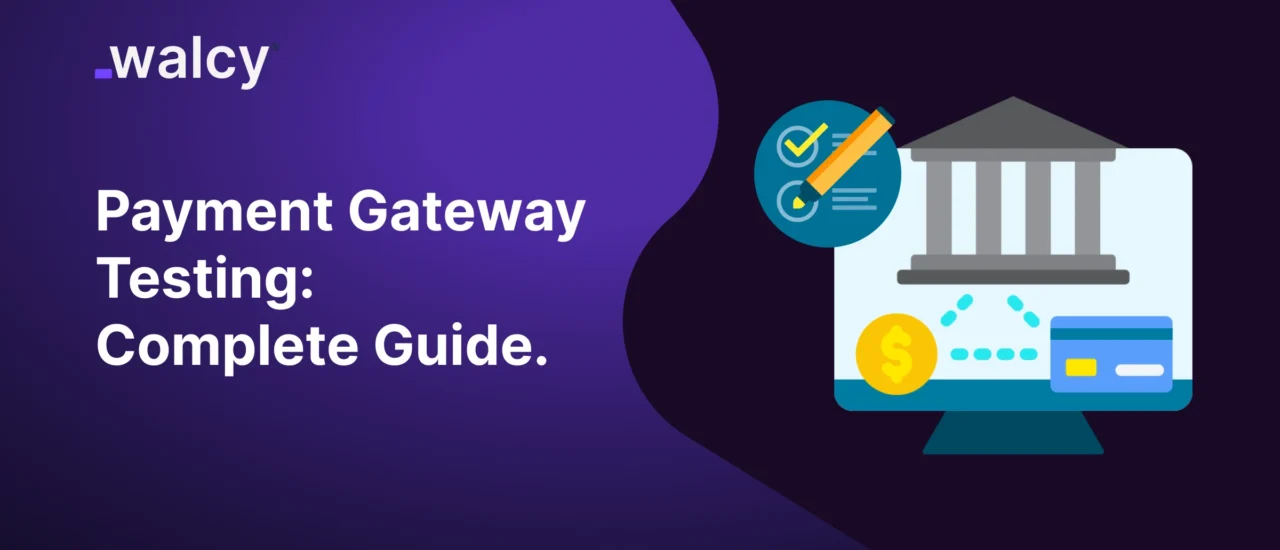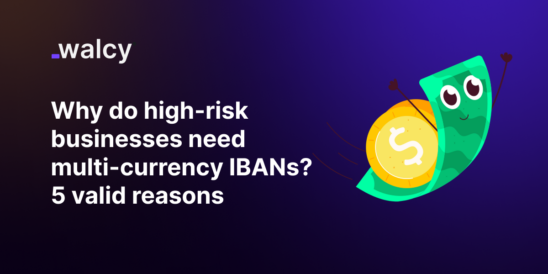Within the world of fast-moving e-commerce and electronic transactions, the importance of a payment gateway cannot be underplayed for online businesses.
In essence, the payment gateway connects the customer and the merchant through their financial institutions by offering safe and uninterrupted transactions.
The question, though, becomes how to make the systems work to meet increasingly important criteria like reliability, security, and performance of these very important e-payment gateways.
It is at this point that the payment gateway test fits in.
This tutorial will discuss payment gateway testing in great detail, including its importance, tools, test cases, and some frequently asked questions about it.
At the end of this guide, you will have learned how to conduct effective testing for any kind of gateway and what security is ensured for the payment process through them.
What is Payment Gateway Testing?
Payment gateway testing is the process of testing the functionality, security, and performance of a payment gateway.
It ensures smoothness in transaction handling with security and efficiency across various scenarios, including but not limited to successful payments, failed transactions, refunds, etc.
Generally, payment gateway testing is necessary for the identification and fixation of different issues that may hamper the whole flow of processing payments or reveal sensitive information and cause financial losses.
It involves testing a payment gateway integrated with a website or app of a merchant for its compatibility with different types of payments, various currencies, and multiple devices.
Read about: Multiple Payment Gateways 101: What Is It & How It Works?
Why is Payment Gateway Testing Important?
Payment gateway testing is important for several reasons:
-
Ensures Accuracy in Transactions:
Payment gateway testing ensures that the transaction is accurate, and the exact amount is deducted or credited to the respective accounts. This prevents financial discrepancies and helps in gaining customer trust.
-
Enhances Security:
Cyber-attacks are at their highest ever, so testing ensures sensitive customer data, like credit card information, is encrypted and out of the reach of any unauthorized access. This is important for maintaining industry standards such as PCI-DSS.
-
Improved User Experience:
A hassle-free payment workflow enhances customer experience and reduces shopping cart abandonment rates. Testing shows the issues that may irritate the users, such as slow processing or unclear error messages.
-
Compliance with Regulations:
Payment gateway systems have to be compliant with different industry standards and regulations.
Testing ensures the compliance of a gateway with all these requirements; thus, decreasing the chances of legal issues.
-
Identifies Performance Bottlenecks:
Testing helps identify issues such as slow transaction processing or system crashes during peak loads.
This ensures that the gateway can handle high traffic without compromising performance.
-
Reduces Financial Risks:
It assists in reducing chargebacks, fraud, and revenue loss by finding and resolving issues early.
This is pretty crucial for any e-commerce business since smooth facilitation of payment processing is vital to maintaining profitability.
Read about: Types of Payment Gateways in 2025. How to Integrate It?
Types of Payment Gateway Testing
Different types of testing will ensure that comprehensive testing is covered, including but not limited to the following.
-
Functional Testing:
This is aimed at validating the core functionalities of the payment gateway in transaction processing, refunds, and error handling. It ensures that under normal conditions, the gateway will work as expected.
-
Security Testing:
Ensures the security of the gateway against SQL injection, data breach, unauthorized access, etc. This becomes critical because sensitive customer data is involved, and trust has to be kept alive.
-
Performance Testing:
Tests the efficiency of the gateway with high volumes and stress conditions; this helps find out the bottlenecks regarding performance and allows one to learn how the gateway will react when peak loads happen.
-
Compatibility Testing:
This checks if the gateway works on different types of devices, browsers, operating systems, and payment methods. This ensures smooth working across all platforms.
-
Integration Testing:
It validates the fact that the payment gateway will smoothly integrate with a merchant’s website or app, which means it should work right in the overall system.
-
Usability Testing:
Tests how easy the payment process is to use and feels in general. It will help to find problems that may annoy users, such as incomprehensible interfaces or unexplained error messages.
Read about: Online Payment Security: Best Practices to Keep Your Transactions Safe
Payment Gateway Testing Tools
To streamline the testing process, various payment gateway testing tools are available. These tools simulate real-world payment scenarios and help testers identify issues efficiently.
Some popular tools include:
- Postman:
Used for API testing to ensure the payment gateway’s APIs function correctly. It allows testers to send requests to the gateway and analyze the responses.
- Soap:
This tool will be perfect for the testing of SOAP and Restful web services, including payment gateways. It offers a full suite of tools for functional, security, and performance testing.
- JMeter:
This is a performance testing tool intended to see how the gateway can handle high traffic. It simulates multiple users and transactions to identify performance bottlenecks.
- Burp Suite:
This is a security testing tool for finding vulnerabilities within the payment gateway. It contains scan, crawl, and exploit features of security weaknesses.
- Dummy Payment Gateways:
Simulators like Stripe Test, PayPal Sandbox, and Authorize.Net’s Test Environment allow testers to emulate real transactions without spending actual money.
These tools become very important in the testing of different types of payment scenarios in a secure environment.
Read about: How Payment Processing Works? Best Payment Processor.
Test Dummy Payment Gateway: A Must for Testing
A dummy payment gateway is a simulated environment that can emulate the action of an actual payment gateway.
It allows testers to perform actions without the involvement of real data or funds in the process. The dummy gateways are very important in:
- Testing different payment scenarios.
- Testing whether the payment gateway will integrate well with the platform of the merchant.
- Training developers and testers without risking real transactions.
Popular dummy payment gateways include but are not limited to Stripe Test, PayPal Sandbox, and Braintree Sandbox. These tools provide a safe environment for testing and debugging, ensuring that the payment gateway works correctly before going live.
Read about: Encryption Vs Tokenization: Which Is Better?
Payment Gateway Testing Apps
A payment gateway testing app is a mobile application intended to test the functionality and performance of payment gateways on mobile platforms.
Such apps simulate real-world payment scenarios and help testers identify issues specific to mobile devices. A few popular payment gateways testing apps are as follows:
- Stripe Mobile Testing App:
Allows testers to simulate transactions on mobile devices.
- PayPal Sandbox App:
A mobile version of PayPal’s sandbox environment for testing.
- Razorpay Test App:
This provides a way for testers to test the Razorpay payment gateway on mobile platforms.
These applications play an important role in ensuring the payment gateway functions as required on all devices to provide a similar user experience.
Payment Gateway Testing Questions
Following are some of the most common payment gateway testing questions that normally testers and developers ask:
- How can you test a payment gateway when you have no real money to spend?
Using dummy payment gateways or a sandbox provided by all payment service providers, like Stripe, PayPal, or Authorize.Net.
- What are the major issues in payment gateway testing?
Challenges include: ensuring security, handling multiple types of currencies, testing for edge cases, and integrating with multiple platforms.
- How do I ensure PCI-DSS compliance during the testing?
Using encrypted connections, avoid data storage of sensitive information, and follow PCI-DSS guidelines while testing.
- What are the names of some tools for performance testing a payment gateway?
Yes, the general names include Meter, Load Runner, and Gatling.
- How do I handle failed transactions during the testing?
Perform simulations for scenarios such as insufficient funds, expired cards, or network issues and ensure the gateway handles them gracefully.
Best Practices of Payment Gateway Testing
- Early and Often Test:
Testing should be started at the development phase itself and continued throughout the lifecycle. This will ensure that bugs are found early and fixed, reducing the probability of costly mistakes.
- Realistic Data:
Realistic transaction data should be used to simulate real-life scenarios. This will ensure that the gateway functions well under real conditions.
- Automate Where Possible:
Utilize automation tools to quicken repetitive tests, improving accuracy. Automation helps in maintaining consistency throughout test cycles.
- Security First:
Ensure security testing to protect sensitive customer data. This includes tests for vulnerabilities like SQL injection, cross-site scripting, and data breaches.
- Test Across Devices and Platforms:
Make sure that the gateway is compatible with a variety of devices, browsers, and operating systems to provide seamless experiences across platforms.
- Monitor Performance:
Keep constant performance monitoring of the gateway under various conditions. It will help find out and eliminate the bottlenecks in performance before users face them.
Conclusion
Testing of the payment gateway is one indispensable manner through which various e-businesses can expect success.
The business ensures, through functionality, security, and performance testing, that the customer has a seamless and secure experience of making a payment.
With proper tools, test cases, and best practices, payment gateway testing may thus help companies avoid financial losses, increase client trust, and remain competitive.
In 2025, payment gateway testing will continue to be in great demand due to the emerging trends in technology and increasing demands for secure and efficient payment gateways.
In this regard, awareness and implementation of the latest testing methods will not only keep them abreast of the latest developments in the field but also ensure that their payment gateways are future-compatible.
With this detailed guide, you have covered the basics to get you equipped to make your payment system robust, flexible, and fault-tolerant.
Whether you are a developer, tester, or business owner, investing in the testing of a payment gateway is one step closer to building trust and creating an amazing customer experience.
In this respect, follow the best practices in this guide to make your payment gateway secure, efficient, and ready for the demands of the modern-day digital economy.
Do follow us on Facebook and LinkedIn, to stay connected with us.



